The opening of the international scientific conference "Cultural heritage of Uzbekistan in the focus of modern science" took place at the Palace of Youth Creativity in Samarkand. It takes place on the eve of the VI International Congress of the World Society "Cultural heritage of Uzbekistan - the foundation of a new renaissance." During the conference, the Chairman of the Board of the Firdavs Abdukhalikov Society, Academician, Chairman of the Editorial Board of the project "Cultural Heritage of Uzbekistan in the Collections of the World" Akmal Saidov, Vice-President of the Academy of Sciences of Uzbekistan, Doctor of Historical Sciences, Director of the Institute of Oriental Studies of the Academy of Sciences of the Republic Bakhrom Abdukhalimov , as well as the General Director of the Research Center for Islamic History, Art and Culture Mahmud Erol Kilic (Turkey). Between speeches, videos were broadcast on the screen dedicated to the cultural life of Uzbekistan and the projects of the World Society. “This project, which is being implemented at the initiative of President Shavkat Mirziyoyev, is a clear indicator of the results of reforms in the new Uzbekistan. And all those present during these five years that the new Uzbekistan exists have contributed to this project. Contributed by a number of government organizations, public figures and organizations, foreign research organizations and, of course, scientists - you. All of us, united, are doing a very good and necessary thing. The cultural heritage of Uzbekistan, we are all talking about it, is the heritage of all mankind. Uzbekistan, and indeed the whole of Central Asia as a whole, is a crossroads of cultures, civilizations, religions, and empires. It is very important that we talk about this region, as there is an interest in the world in the region, which is located at the crossroads of the Silk Road,” said Firdavs Abdukhalikov. Those present honored Academician Edward Rtveladze, one of those who stood at the origins of the Society, with a minute of silence. In memory of the scientist, Sergei Laptev, a member of the Board of the Society, a special employee of the Miho Museum (Japan), delivered a speech. A video dedicated to Rtveladze was also shown. A welcome letter was read to the participants of the Congress from the patron, Chairman of the Board of the oilfield service company ERIELL Group Bakhtiyor Fazilov, who supports the project. “It has become a great honor for us to support this undertaking from the first days of the project’s existence, as we are aware of the importance of the work being carried out in the new Uzbekistan to study the huge potential that our land stores and increases,” Fazilov said. More than 250 world-famous orientalists will take part in the work of the VI International Congress of the Society. Among them are 33 directors of famous international museums, 15 directors of national museums, more than 15 academicians, more than 20 professors, more than 20 doctors of science.
Dialog.Tj: Conference "Cultural heritage of Uzbekistan in the focus of modern science" opened in Samarkand
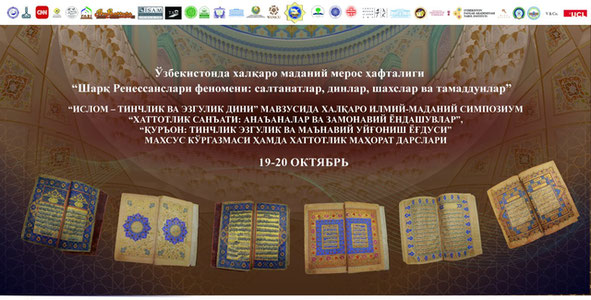
INNOVATIVE APPROACHES TO THE SPIRITUAL HERITAGE OF ISLAM: QURAN DAY WITHIN THE CULTURAL HERITAGE WEEK
On October 19, as part of the International Cultural Heritage Week of Uzbekistan, "The Phenomenon of Eastern Renaissances: States, Religions, Personalities, and Civilizations," an international scientific and cultural symposium titled "Islam — the Religion of Peace and Kindness" will be held in the conference hall of the World Society for the Study, Preservation, and Popularization of the Cultural Heritage of Uzbekistan. Additionally, projects such as "Medieval Qurans of Uzbekistan" and "The Innovative Museum of Imam Al-Bukhari" will be presented.

THE FIRST DAY OF THE CULTURAL HERITAGE WEEK: GREETINGS AND DISCUSSIONS
On October 18, the opening ceremony of the International Cultural Heritage Week took place in the conference hall of the World Society for the Study, Preservation, and Popularization of the Cultural Heritage of Uzbekistan (WOSCU) in Tashkent. The event, titled “The Phenomenon of the Eastern Renaissance: States, Religions, and Civilizations,” brought together over 250 scholars, experts, and representatives of cultural institutions, as well as media. Among them were more than 20 renowned international specialists.

The Opening of the Cultural Heritage Week in Tashkent: A New Impetus for Global Scientific Dialogue
On October 18, the opening ceremony of the International Cultural Heritage Week in Tashkent took place in the conference hall of the World Society for the Study, Preservation, and Promotion of the Cultural Heritage of Uzbekistan (WOSCU). The event, titled "The Phenomenon of the Eastern Renaissance: States, Religions, and Civilizations," gathered leading scholars, experts, and representatives of cultural institutions, with over 100 international participants from 20 countries.
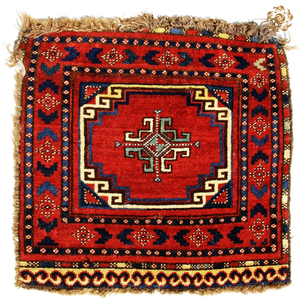
Happiness in Carpets
Pileless carpets, such as gadjari, ok-enli, and kiz-gilam, represent a unique art form that reflects the rich cultural tradition of Uzbekistan. The craftswomen who create these carpets use ancient techniques and symbolism, making each piece not only beautiful but also deeply meaningful. What kind of meaning? We’ll explain here:
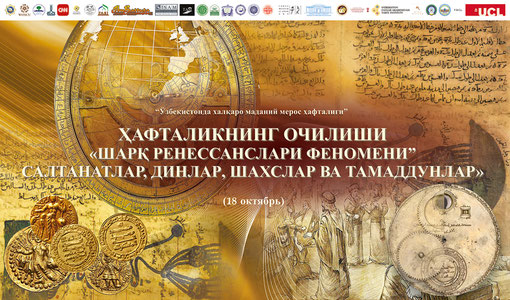
Opening ceremony of the Cultural Legacy Week in Tashkent: "The Phenomenon of Oriental Renaissances: States, Religions, Personalities and Civilizations".
On October 18, the opening ceremony of the Cultural Legacy Week "The Phenomenon of Oriental Renaissances: States, Religions and Civilizations" will be held in the Conference Hall of the World Society for the Study, Preservation and Popularization of the Cultural Legacy of Uzbekistan (WOSCU).

"Timurid ceramics as part of the art of Chinese porcelain"
Timurid ceramics and Chinese blue-and-white porcelain represent significant elements of the cultural exchange that occurred in Central Asia during the 15th and 16th centuries. Let's explore how it all began:
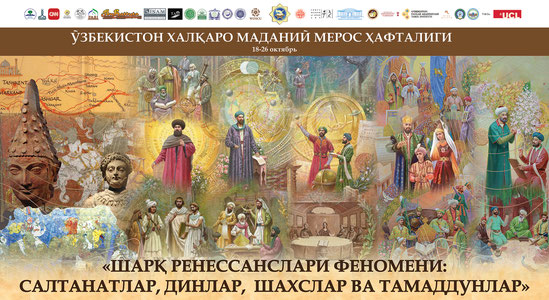
Tashkent is preparing to host the international Cultural Legacy Week "The Phenomenon of the Oriental Renaissance: States, Religions, Personalities and Civilizations".
From October 18 to 27, 2025, the capital of Uzbekistan will become the center of international cultural dialogue. Tashkent will host the Cultural Legacy Week "The Phenomenon of the Oriental Renaissance: States, Religions, Personalities and Civilizations", which will include conferences, seminars, forums, exhibitions and presentations. More than 100 foreign scholars and experts, including heads of international cultural organizations, heads of foreign museums and libraries are expected to participate. CNN and Euronews will provide information support.
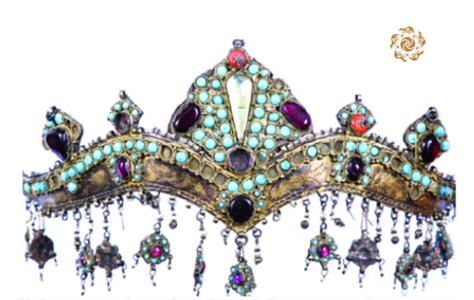
"Golden Eyebrows" of the Fergana Valley
Women's forehead ornaments of the Fergana Valley and Tashkent are a vivid example of the traditional art and culture of this region. However, the tillya-kosh, or "golden eyebrows," is a special detail:

Charmduzy are masters of all trades from Samarkand and Bukhara
The Charmduzy, leather craftsmen of Central Asia, were renowned for their artistry and skill, creating unique items in front of their clients. In the bustling bazaars of Samarkand and Bukhara, they transformed ordinary pieces of leather into true works of art. Here’s how they did it:

How the headdress was used to determine the status of women in Bukhara?
The telpak and kaltapushak are not only beautiful but also symbolic elements of women's wardrobe in the late 19th century. These headpieces can be used to determine the wealth of urban women in Bukhara. Here’s how:
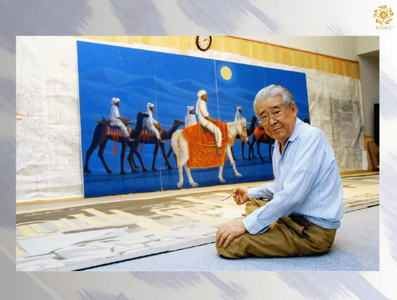
How Uzbekistan Changed the Life of a Japanese Artist Who Survived the Atomic Bombing
Renowned Japanese artist Hirayama Ikuo survived the atomic bombing in 1945. In 1959, he learns that he is terminally ill with leukemia. At that time, he creates a painting dedicated to the origins of Buddhist teachings, titled 'The Origin of Buddhism,' inspired by the journey of the Chinese monk Xuanzang along the Silk Road in the 7th century. The artist believes that this work might be the last of his life... What happened next? Read here:
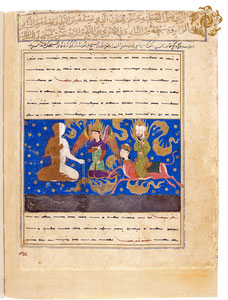
"Mirajnama" at the Court of Louis XIV
The National Library of France has a rich history, beginning with its establishment as the royal library. An important milestone in its development was the accumulation of manuscripts from Central Asia, which contributed to the expansion of knowledge about Eastern culture and literature. One of the key acquisitions was the famous manuscript "Mirajnama," which arrived in Paris in the 17th century. Read here about how this ancient manuscript came into the hands of the Musketeers’ ruler, Louis XIV.

Did Prokudin-Gorsky work as a tax collector in Turkestan?
Pioneer of color photography in the Russian Empire, author of hundreds of photographs of Turkestan and the famous photograph of the Emir of Bukhara, Prokudin-Gorsky made a significant contribution to the cultural heritage of both Uzbekistan and the world. His works are stored in the Library of Congress in the USA, and exhibitions are held worldwide. But was photography his primary occupation, or were the photographs merely a hobby while he earned his living as a tax collector in Turkestan, a role often despised in the regions of the Russian Empire? Let's explore this here.
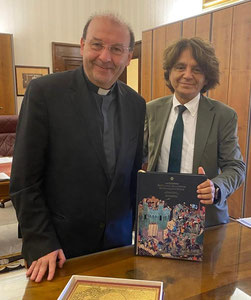
The Vatican Library is planning to engage WOSCU in the study of its archives
The Prefect (General Director) of the Vatican Apostolic Library, Mauro Mantovani, has not ruled out the possibility of close collaboration with WOSCU and the involvement of orientalists from the World Society in studying the archives of one of the unique libraries in the world.

Karakalpak jewelry in the collection of the Russian Ethnographic Museum
Karakalpak jewelry, presented in the Russian Ethnographic Museum, reflects the rich cultural tradition and artistic mastery of this people. Among them, various types of women's pectoral jewelry, earrings, rings and bracelets stand out, each of which carries unique symbolism and meaning.
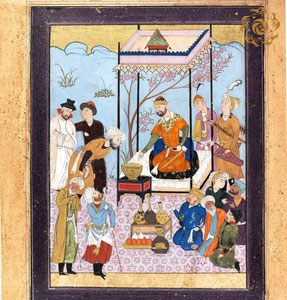
Alexander the Great and the Riddle of the Cup of Jamshid
The miniature "Seven Sages," dated around 1590, serves as an intriguing example of the interaction between various cultures and traditions in the art of that time. It likely depicts Iskandar (Alexander the Great) surrounded by seven philosophers, who may symbolize the wisdom and knowledge of different peoples studying the Cup of Jamshid.
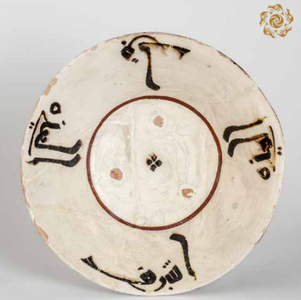
Hadiths and wishes on ceramic dishes
Glazed ceramics decor of the 10th-12th centuries. Excellently reflect the significant changes that came to the culet and art of the Central Asian region as a result of the spread of Islam. Completely new characteristics of Islamic art.

Visit of the delegation of members of the World Society for the Study, Preservation and Popularization of the Cultural Legacy of Uzbekistan from the UAE

Samarkand is an ancient city. In the Middle Ages it used to be the science center of the East

Cultural Legacy of Uzbekistan on Turkish TV channel
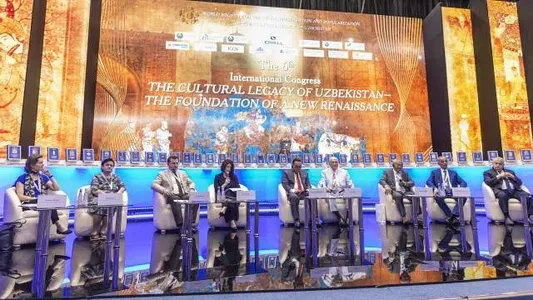
The Orient is a museum business: why the Hermitage needs Uzbek weapons

The world scientists reported sensational discoveries

Unity and diversity of cultures
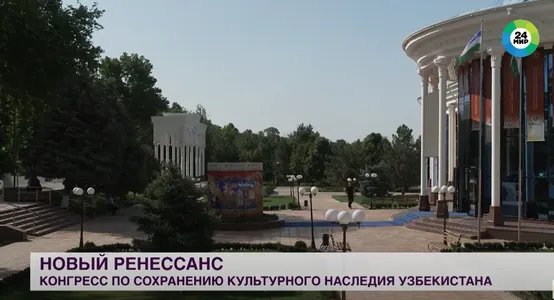
The 6th International Congress of the World Society "Cultural Legacy of Uzbekistan - the Foundation of a new Renaissance"

Film director Timur Bekmambetov to take part in project dedicated to Kyrk-Kyz epic

Svetlana Gorshenina: The project of studying and popularizing the cultural legacy of Uzbekistan has become a phenomenon of science

Tajik scholar to study Uzbek manuscripts stored in Tajikistan

Professor of Tajik National University: the congress will go down in history as a catalyst for discoveries that will turn the world upside down

A manuscript about As-Sufi commissioned by Ulugbek has been returned to Samarkand as a facsimile

Congress opening: golden collection of Emir of Bukhara found in Giuseppe Tucci Museum in Rome

Murat Dzhumataev: “The peoples of Central Asia developed science, culture and art on the same territory, and this time was called the Renaissance."

Charlotte Kramer: "Our mission is to recreate the masterpieces of Central Asia, scattered around the world."

Lilia Sattarova: "The World Society Project once again proved the deep connection and interpenetration of our cultures"
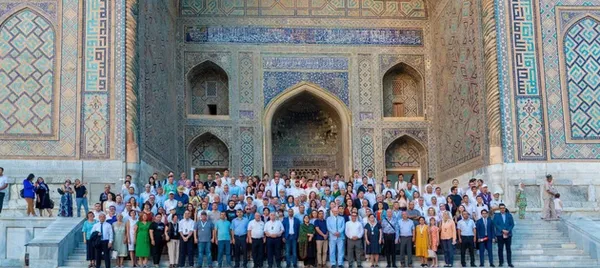
Participants in the 6th Congress highly appreciated the efforts of the President and the Government of Uzbekistan in the preservation of the cultural legacy
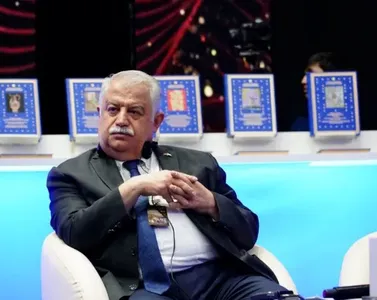
Muzaffar Sheker: "The work done by Uzbekistan in the field of culture is admirable"
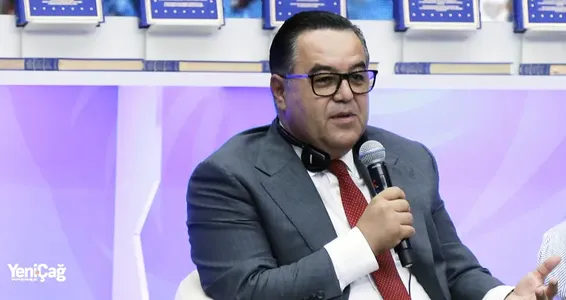
Firdavs Abdukhalikov: "The reforms of the New Uzbekistan yield bright results"

Irina Popova: "Uzbekistan is a country led by people who advocate the preservation of ancient culture"
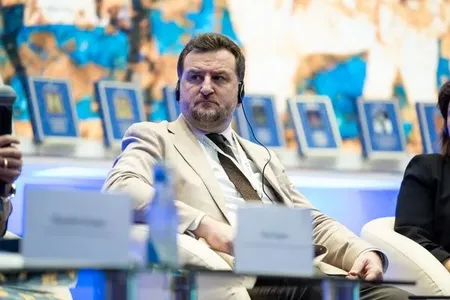
Sali Shahsivari: I am sincerely glad that cultural projects are fully supported by the President of Uzbekistan
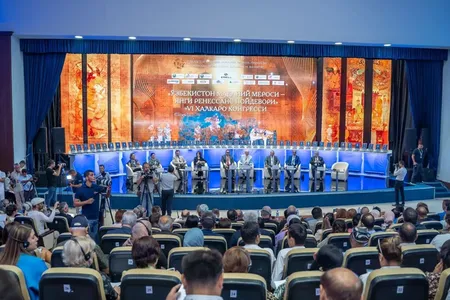
6th International Congress Cultural Heritage of Uzbekistan — Foundation of a New Renaissance has started

Historical and archaeological park to be created in Karakalpakstan

Sara Noshadi: UNESCO is pleased to see Uzbekistan's efforts to preserve its cultural heritage
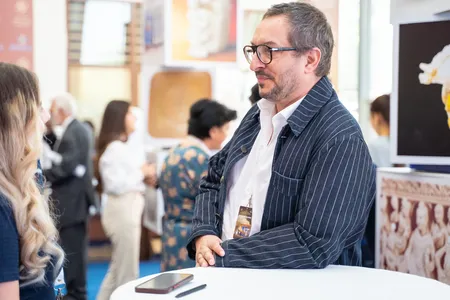
The Government of Uzbekistan is undoubtedly making tremendous efforts to create an international cultural dialogue
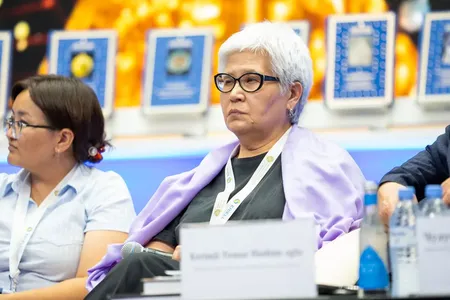
"Culture, art, education are the bridges that build the future"

Frederick Starr: Uzbekistan is the only country that had direct contact with all centers of civilization

A book of memoirs about the "knight of archeology" Edward Rtveladze presented in Samarkand
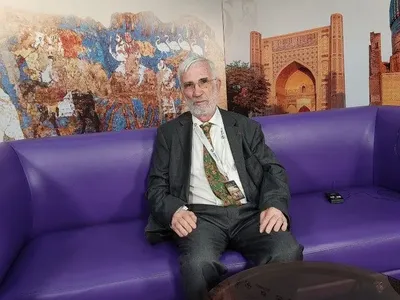
"The Congress is amazing with the volume of scientific publications", - Francis Richard
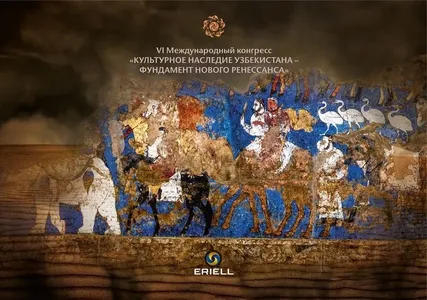
The 6th International Congress of the World Society Cultural Legacy of Uzbekistan - the Foundation of a New Renaissance will take place in Uzbekistan
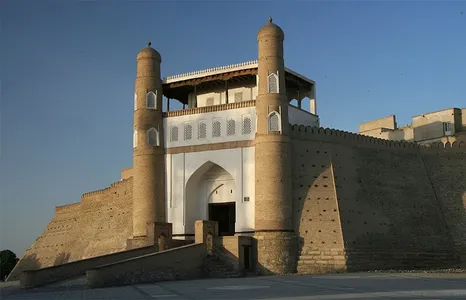
A Book about Valuables of the Emirs of Bukhara to be Published Soon

Book revealing main stages in cinema development to be published in Uzbekistan
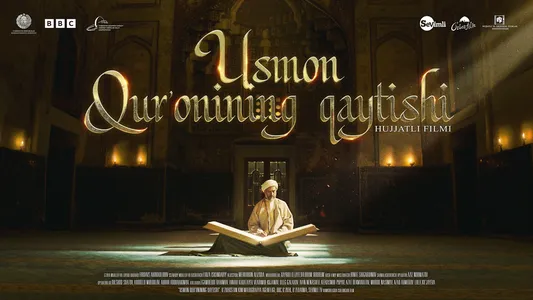
A Documentary Film about the Legendary Uthman Qur'an Made in Uzbekistan
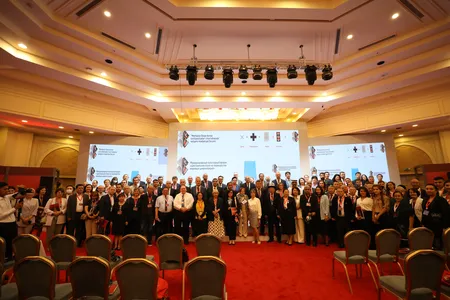
The participants of the 5th International Congress adopted a traditional address to the President of the Republic of Uzbekistan
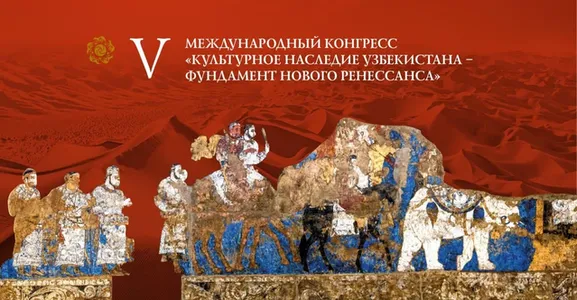
Appeal of participants of the 5th international congress "The cultural legacy of Uzbekistan: the foundation of a new renaissance" to the President of the Republic of Uzbekistan Shavkat Mirziyoyev
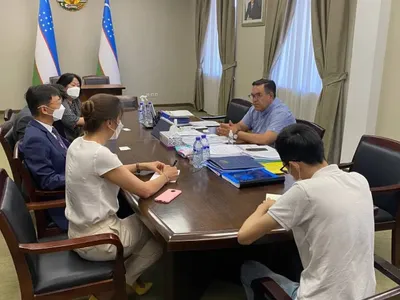
Work starts on a book-album dedicated to the rarities of Uzbekistan in the collections of Korea
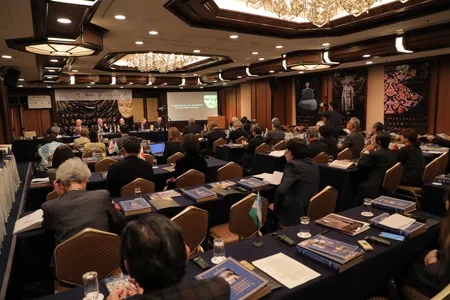
Tokyo hosted an international scientific conference "Uzbekistan and Japan on the Great Silk Road"
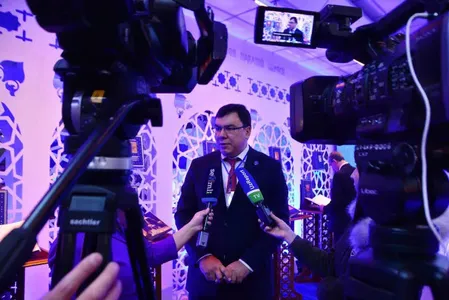
Aziz Abduhakimov: project "Cultural legacy of Uzbekistan" is a unique initiative
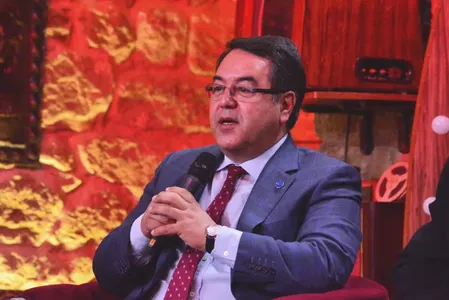
Firdavs Abdukhalikov, "We must educate our youth"

Dialogue of Cultures: the Cultural Legacy of Uzbekistan presented in Delhi
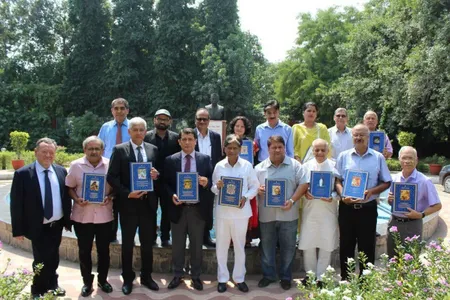
Presentation of a series of books on the cultural heritage of Uzbekistan was held in Delhi

The author of the project "Cultural Legacy of Uzbekistan in World Collections" was awarded the "Mekhnat Shukhrati" Order

Orientalists of the world appealed to the President of Uzbekistan
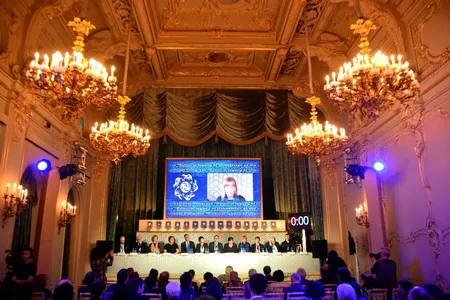
Open address of the participants of the 2nd International Congress "Cultural Legacy of Uzbekistan" to the President of the Republic of Uzbekistan Sh.M. Mirziyoyev

The Kultura TV Channel about the Cultural Legacy of Uzbekistan in St. Petersburg

On March 16, 2018, an international media forum dedicated to the implementation of the project "Cultural Legacy of Uzbekistan in world collections" was held in Tashkent

The Russian Academy of Sciences will hand over copies of ancient manuscripts to Uzbekistan

Russian libraries and museums will receive a catalog of Uzbekistan's cultural legacy
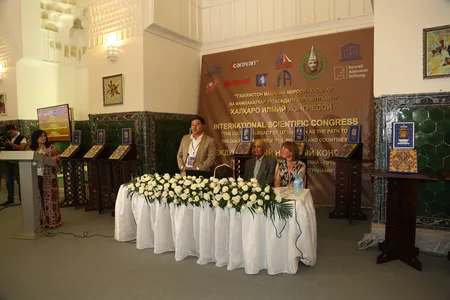
"Cultural Legacy of Uzbekistan" gathered world scientists in Tashkent and Samarkand

